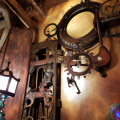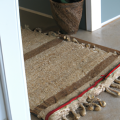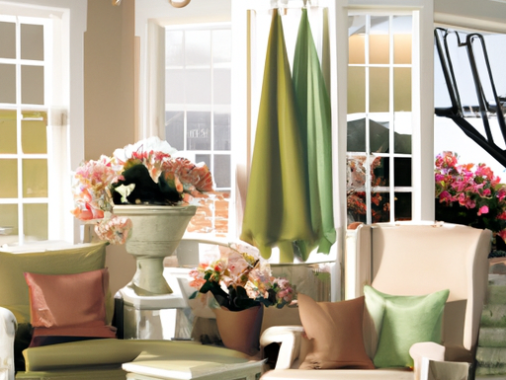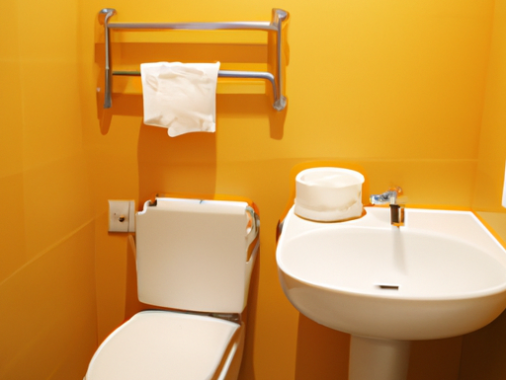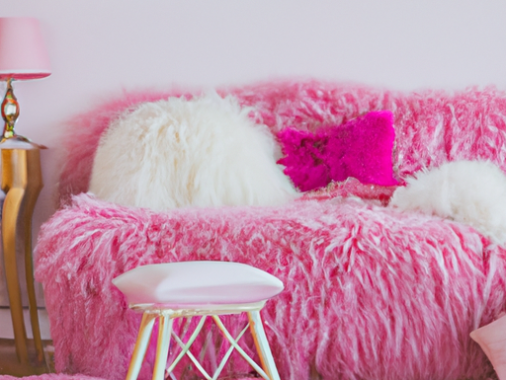-
Table of Contents
- Introduction
- How to Create a Productive Home Office Space
- The Benefits of Incorporating Natural Light into Home Office Design
- The Latest Trends in Home Office Furniture
- Tips for Maximizing Storage in a Home Office
- How to Incorporate Ergonomics into Home Office Design
- The Pros and Cons of Working from Home
- How to Design a Home Office That Fits Your Needs
- Q&A
- Conclusion
Introduction
The modern home office is a space that has become increasingly popular in recent years. With the rise of remote work and the need for a comfortable and productive workspace, many people are turning to modern home office design to create a space that is both stylish and functional. From sleek and minimalistic designs to vibrant and eclectic styles, modern home office design offers a variety of options to suit any taste. Whether you’re looking for a space to work from home or just a place to relax and get creative, modern home office design can help you create the perfect space for your needs.
How to Create a Productive Home Office Space
Creating a productive home office space is essential for those who work from home. A well-organized and comfortable workspace can help to increase productivity and reduce stress. Here are some tips for creating a productive home office space.
First, choose a dedicated workspace. It is important to have a designated area for work that is separate from the rest of the home. This will help to create a sense of focus and help to reduce distractions.
Second, make sure the workspace is comfortable. Invest in a comfortable chair and desk that are the right size for you. Make sure the desk is large enough to accommodate all of your work materials.
Third, keep the workspace organized. Invest in storage solutions such as filing cabinets, shelves, and drawers to keep all of your work materials organized. This will help to reduce clutter and make it easier to find what you need.
Fourth, add personal touches. Add items to the workspace that make it feel like your own. This could include photos, plants, artwork, or other items that make the space feel inviting.
Finally, make sure the workspace is well-lit. Natural light is best, but if that is not available, make sure to invest in good lighting. This will help to reduce eye strain and make it easier to focus.
By following these tips, you can create a productive home office space that will help to increase your productivity and reduce stress.
The Benefits of Incorporating Natural Light into Home Office Design
Incorporating natural light into home office design can have a number of benefits. Natural light can help to create a more productive and comfortable work environment, while also reducing energy costs. Here are some of the advantages of incorporating natural light into home office design.
First, natural light can help to improve productivity. Studies have shown that exposure to natural light can help to improve focus and concentration, leading to increased productivity. Natural light can also help to reduce fatigue and stress, which can lead to improved mental clarity and better decision-making.
Second, natural light can help to reduce energy costs. By allowing natural light to enter the home office, you can reduce the need for artificial lighting, which can help to reduce energy costs. Additionally, natural light can help to reduce the need for air conditioning, which can also help to reduce energy costs.
Third, natural light can help to create a more comfortable work environment. Natural light can help to reduce glare and eyestrain, which can lead to improved comfort and productivity. Additionally, natural light can help to create a more pleasant atmosphere, which can help to reduce stress and improve morale.
Finally, natural light can help to improve the overall aesthetic of the home office. Natural light can help to create a more inviting and attractive space, which can help to make the home office more inviting and comfortable.
Incorporating natural light into home office design can have a number of benefits. Natural light can help to improve productivity, reduce energy costs, create a more comfortable work environment, and improve the overall aesthetic of the home office. For these reasons, incorporating natural light into home office design is a great way to create a more productive and comfortable work environment.
The Latest Trends in Home Office Furniture
The home office is becoming an increasingly popular space in the home, and as such, the demand for home office furniture is on the rise. Home office furniture has come a long way in recent years, with a variety of styles, materials, and designs available to suit any taste and budget. Here are some of the latest trends in home office furniture.
Ergonomics: Ergonomic furniture is designed to provide comfort and support while you work. Ergonomic chairs, desks, and other pieces of furniture are designed to reduce strain on your body and help you maintain good posture. Look for adjustable chairs and desks that can be adjusted to fit your body and provide the support you need.
Multi-Functional Furniture: Multi-functional furniture is becoming increasingly popular in home offices. Look for pieces that can be used for multiple purposes, such as a desk that doubles as a storage unit or a chair that can be used as a guest bed. This type of furniture is great for small spaces, as it allows you to maximize the use of your space.
Modern Designs: Modern designs are becoming increasingly popular in home office furniture. Look for sleek, contemporary pieces that will add a modern touch to your office. Look for pieces with clean lines and minimalistic designs that will add a modern touch to your office without taking up too much space.
Organization: Organization is key when it comes to home office furniture. Look for pieces that will help you keep your office organized and clutter-free. Look for pieces with plenty of storage space, such as filing cabinets, shelves, and drawers.
These are just a few of the latest trends in home office furniture. With so many options available, you’re sure to find the perfect pieces to suit your needs and style.
Tips for Maximizing Storage in a Home Office
1. Utilize Vertical Space: Make use of the walls and ceilings in your home office by installing shelves and cabinets. This will help you to maximize the storage space in your office.
2. Use Multifunctional Furniture: Invest in furniture that can serve multiple purposes. For example, a desk with drawers or a filing cabinet with a built-in desk top.
3. Install a Pegboard: A pegboard is a great way to store items such as tools, office supplies, and other items that you need to access quickly.
4. Utilize Baskets and Bins: Baskets and bins are great for storing items that you don’t need to access frequently. They can be placed on shelves or in cabinets to help you maximize storage space.
5. Invest in a Filing Cabinet: A filing cabinet is a great way to store important documents and paperwork. It will help you to keep your office organized and clutter-free.
6. Utilize Under-Desk Storage: Make use of the space under your desk by installing drawers or shelves. This will help you to store items such as office supplies and other items that you need to access quickly.
7. Utilize the Corners: Corners are often overlooked when it comes to storage. Utilize this space by installing shelves or cabinets.
8. Use Wall Hooks: Wall hooks are great for storing items such as coats, hats, and umbrellas. They can also be used to hang artwork or other decorations.
9. Install a Wall Organizer: A wall organizer is a great way to store items such as mail, keys, and other items that you need to access quickly.
10. Utilize the Closet: If you have a closet in your home office, make use of it by installing shelves and cabinets. This will help you to maximize the storage space in your office.
How to Incorporate Ergonomics into Home Office Design
Ergonomics is the science of designing and arranging furniture, equipment, and other items in a workspace to maximize comfort and productivity. Incorporating ergonomics into home office design is essential for creating a comfortable and productive workspace. Here are some tips for incorporating ergonomics into home office design:
1. Choose the Right Chair: Selecting the right chair is essential for ergonomic home office design. Look for a chair that is adjustable and provides lumbar support. It should also have adjustable armrests and a swivel base.
2. Adjust the Desk Height: The desk should be adjusted to the correct height for the user. The desk should be at a height that allows the user to type comfortably with their arms at a 90-degree angle.
3. Place the Monitor at the Right Distance: The monitor should be placed at a distance that allows the user to view the screen without straining their eyes. The monitor should be at least 20 inches away from the user’s face.
4. Use a Footrest: A footrest can help reduce strain on the lower back and legs. It should be adjustable and provide support for the user’s feet.
5. Utilize a Keyboard Tray: A keyboard tray can help reduce strain on the wrists and arms. It should be adjustable and provide support for the user’s wrists.
By following these tips, you can create an ergonomic home office design that is comfortable and productive.
The Pros and Cons of Working from Home
Working from home has become increasingly popular in recent years, as technology has made it easier for people to stay connected and collaborate remotely. While there are many advantages to working from home, there are also some potential drawbacks that should be considered.
Pros
One of the biggest advantages of working from home is the flexibility it provides. Working from home allows you to set your own hours and work when it is most convenient for you. This can be especially beneficial for those with family commitments or other obligations that make it difficult to work a traditional 9-5 job. Additionally, working from home can save you money on commuting costs and other expenses associated with working in an office.
Another benefit of working from home is the ability to create a comfortable and productive workspace. You can customize your workspace to suit your needs and preferences, which can help you stay focused and productive.
Cons
One of the potential drawbacks of working from home is the lack of social interaction. Working in an office environment allows you to interact with colleagues and build relationships, which can be beneficial for both your professional and personal life. Working from home can also be isolating, which can lead to feelings of loneliness and depression.
Another potential downside of working from home is the lack of structure. Without the structure of an office environment, it can be difficult to stay focused and motivated. Additionally, it can be difficult to separate work and home life, which can lead to burnout.
In conclusion, working from home can be a great option for those who need flexibility and want to save money on commuting costs. However, it is important to consider the potential drawbacks, such as the lack of social interaction and structure, before making the decision to work from home.
How to Design a Home Office That Fits Your Needs
Creating a home office that meets your needs can be a daunting task. However, with a few simple steps, you can design a workspace that is both comfortable and functional.
First, consider the size of the space you have available. Measure the area and determine how much room you have to work with. This will help you decide what type of furniture and equipment you can fit in the space.
Next, think about the type of work you will be doing in the office. If you plan to use the space for computer work, you will need a desk, a comfortable chair, and a computer. If you plan to use the space for writing, you may need a desk, a comfortable chair, and a filing cabinet.
Once you have determined the type of work you will be doing, you can begin to select the furniture and equipment that will best suit your needs. Choose pieces that are comfortable and ergonomic, and that will provide adequate storage for your supplies.
Finally, consider the lighting in the space. Natural light is best, but if you don’t have access to natural light, you may need to invest in some task lighting. This will help you focus on your work and reduce eye strain.
By following these steps, you can design a home office that fits your needs and allows you to work comfortably and efficiently.
Q&A
1. What are the benefits of having a modern home office design?
The benefits of having a modern home office design include increased productivity, improved organization, and a more comfortable and inviting workspace. Additionally, modern home office designs can help to create a more professional atmosphere, which can help to boost morale and inspire creativity.
2. What elements should be included in a modern home office design?
The elements that should be included in a modern home office design include comfortable seating, adequate lighting, plenty of storage space, and a desk that is the right size for the space. Additionally, incorporating modern technology such as a laptop, printer, and other devices can help to create a more efficient workspace.
3. How can I make my home office design more efficient?
To make your home office design more efficient, consider incorporating ergonomic furniture and accessories. Additionally, organizing your workspace with shelves, drawers, and other storage solutions can help to keep your workspace clutter-free and organized.
4. What colors should I use in my modern home office design?
When selecting colors for your modern home office design, consider using neutral colors such as white, gray, and beige. These colors can help to create a calming and inviting atmosphere, while also making the space appear larger.
5. What type of lighting should I use in my modern home office design?
When selecting lighting for your modern home office design, consider using natural light whenever possible. Additionally, incorporating task lighting such as desk lamps and wall sconces can help to create a more efficient workspace.
6. What type of furniture should I use in my modern home office design?
When selecting furniture for your modern home office design, consider incorporating ergonomic pieces such as adjustable chairs and standing desks. Additionally, incorporating storage solutions such as shelves and drawers can help to keep your workspace organized and clutter-free.
7. How can I make my modern home office design more inviting?
To make your modern home office design more inviting, consider incorporating plants and artwork. Additionally, adding comfortable seating and a rug can help to create a more inviting atmosphere.
Conclusion
Modern home office design is a great way to create a comfortable and productive workspace in the home. It allows for a more personalized and efficient workspace that can be tailored to the individual’s needs. With the right design, a home office can be a great place to work, relax, and be productive. With the right furniture, lighting, and accessories, a modern home office can be a great place to work and be productive.
